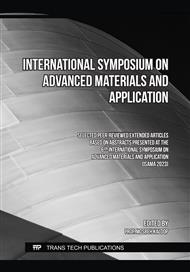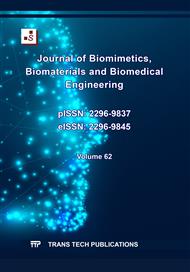[1]
W.G. Wade, M. Addy, In vitro activity of a chlorhexidine-containing mouthwash against subgingival bacteria, J. Periodontol. 60 (1989) 521-525.
DOI: 10.1902/jop.1989.60.9.521
Google Scholar
[2]
T.M. Karpiński, A.K. Szkaradkiewicz, Chlorhexidine--pharmaco-biological activity and application, Eur. Rev. Med. Pharmacol. Sci. 19 (2015) 1321-1326.
Google Scholar
[3]
L.G. DePaola, A.E. Spolarich, Safety and Efficacy of Antimicrobial Mouthrinses in Clinical Practice, ADHA. 81 (2007) 117.
Google Scholar
[4]
G. Giuliana, G. Pizzo, M.E. Milici, G.C. Musotto, R. Giangreco, In vitro antifungal properties of mouthrinses containing antimicrobial agents, J. Periodontol. 68 (1997) 729-733.
DOI: 10.1902/jop.1997.68.8.729
Google Scholar
[5]
R. Porras, G.B. Anderson, R. Caffesse, S. Narendran, P.M. Trejo, Clinical response to 2 different therapeutic regimens to treat peri-implant mucositis, J. Periodontol. 73 (2002) 1118-1125.
DOI: 10.1902/jop.2002.73.10.1118
Google Scholar
[6]
G. W. Denton, "Chlorhexidine," In: S. S. Block, Ed., Disinfection, Sterilization, and Preservation, 5th Edition. Lippincot Williams & Wilkins, Philadelphia, 2001, pp.321-336.
Google Scholar
[7]
G. Rolla, H. Loe, C.R. Schiott, Retention of chlorhexidine in the human oral cavity, Arch. Oral Biol. 16 (1971) 1109-1116.
Google Scholar
[8]
P. Bonesvoll, P. Lökken, G. Rölla, P.N. Paus, Retention of chlorhexidine in the human oral cavity after mouth rinses, Arch. Oral Biol. 19 (1974) 209-212.
DOI: 10.1016/0003-9969(74)90263-5
Google Scholar
[9]
V. Quintas, I. Prada-López, N. Donos, D. Suárez-Quintanilla, I. Tomás, In situ neutralisation of the antibacterial effect of 0.2% Chlorhexidine on salivary microbiota: Quantification of substantivity, Arch. Oral Biol. 60 (2015) 1109-1116.
DOI: 10.1016/j.archoralbio.2015.04.002
Google Scholar
[10]
M.J. Winrow, Metabolic studies with radiolabelled chlorhexidine in animals and man, J. Periodontal Res. Suppl. 12 (1973) 45-48.
DOI: 10.1111/j.1600-0765.1973.tb02163.x
Google Scholar
[11]
C.E. Berchier, D.E. Slot, G.A. Van der Weijden, the efficacy of 0.12% chlorhexidine mouthrinse compared with 0.2% on plaque accumulation and periodontal parameters: a systematic review, J. Clin. Periodontol. 37 (2010) 829-839.
DOI: 10.1111/j.1600-051x.2010.01575.x
Google Scholar
[12]
L. Trahan, Xylitol: a review of its action on mutans streptococci and dental plaque its clinical significance, Int. Dent. J. 45 (1995) 77-92.
Google Scholar



